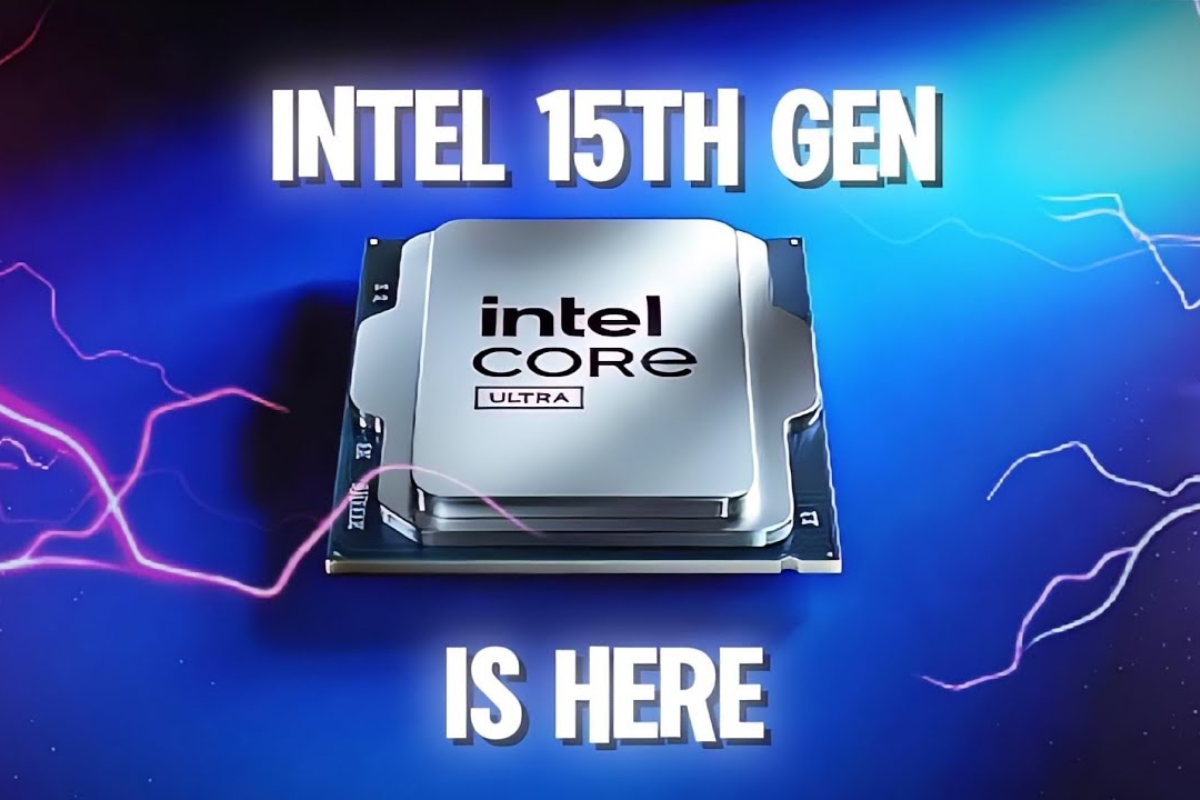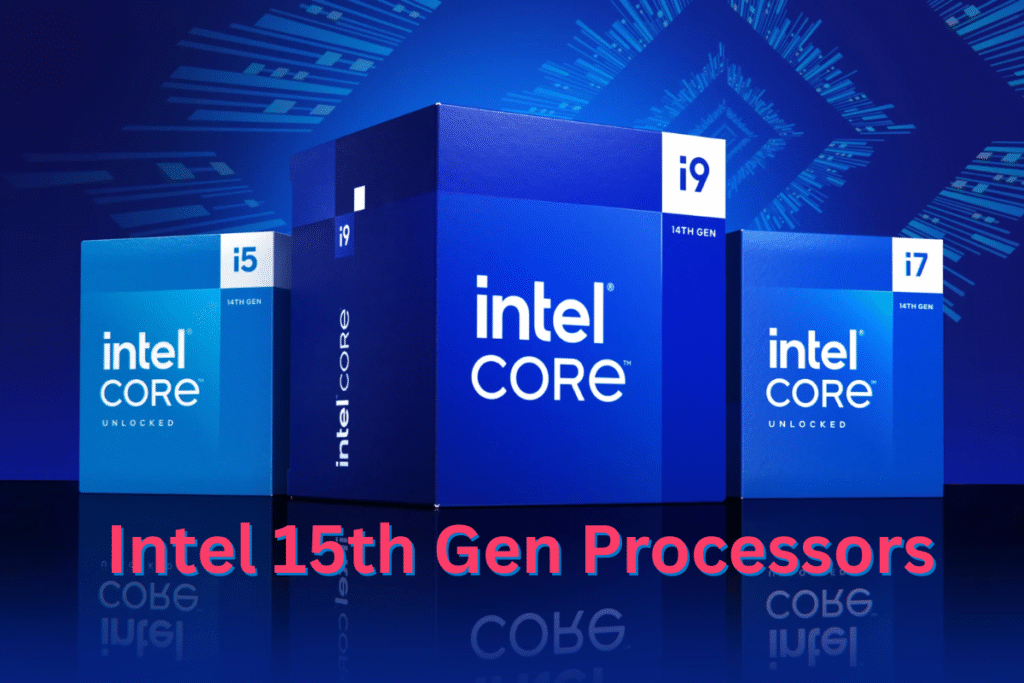The world of computing is evolving faster than ever. With each new generation of CPUs, we see significant leaps in performance, efficiency, and capabilities. Intel, a name synonymous with personal computing power, is once again gearing up to push boundaries with the highly anticipated Intel 15th Gen processors.
Though the 14th Gen Raptor Lake Refresh lineup is still new to many users, leaks, rumors, and roadmap updates have already stirred interest around the next-gen platform. Whether you’re a gamer, creator, developer, or casual user interested in upgrading, the 15th generation could bring the leap forward you’ve been waiting for.
What Is the Intel 15th Gen?
Codenamed Arrow Lake, the Intel 15th Gen processor family is expected to mark a major architectural shift, moving away from the hybrid designs that began with 12th Gen Alder Lake and refined through 13th and 14th Gen lines.
Arrow Lake is believed to be Intel’s first mainstream chip family built on the Intel 20A process node—featuring innovations like PowerVia and RibbonFET. These changes may improve power efficiency, increase core density, and significantly boost performance across both single-threaded and multi-threaded workloads.
🎮 Top 7 Best Gaming Laptops in 2025
Looking for a powerhouse gaming laptop this year? We’ve handpicked the top 7 models of 2025—featuring blazing CPUs, high-refresh displays, and next-gen graphics for immersive gaming performance.
👉 Click here to read “Top 7 Best Gaming Laptops in 2025” 👈
Unlike previous refreshes that reused older nodes, Intel 15th Gen is expected to represent a true generational leap, introducing an entirely new platform and socket.

Expected Features and Innovations
While official specifications remain unconfirmed, here are the most discussed features and changes:
1. Intel 20A Node Architecture
This will be the first consumer-focused chip using Intel’s 20A (Angstrom) process. It promises denser transistor packing and lower power leakage, thanks to RibbonFET—a gate-all-around transistor design—and PowerVia, Intel’s new backside power delivery technology.
2. LGA 1851 Socket
Arrow Lake chips are expected to use the new LGA 1851 socket, replacing the LGA 1700 socket used for Alder Lake, Raptor Lake, and Raptor Lake Refresh CPUs. This also means new motherboards with 800-series chipsets (likely called Z890, B860, etc.).
3. No Hyper-Threading?
One of the more surprising rumors is Intel’s reported plan to drop Hyper-Threading in future CPUs. Instead of using logical cores to simulate parallel tasks, Intel might rely on an increased number of physical cores and improved thread scheduling.
4. AI Acceleration
AI is quickly becoming a central part of modern computing. With Meteor Lake introducing Intel’s first Neural Processing Unit (NPU), the Intel 15th Gen CPUs could take AI performance even further, optimizing everything from productivity apps to gaming.
5. DDR5 and PCIe 5.0 Standardization
With DDR5 memory becoming more accessible and PCIe 5.0 SSDs entering the mainstream, Arrow Lake platforms will likely fully embrace these standards while dropping DDR4 compatibility to simplify platform evolution.
Release Timeline and Availability
Based on Intel’s updated roadmap, Intel 15th Gen is expected to debut in late 2025, likely during the fourth quarter. Desktop chips are expected to launch first, followed by mobile variants for laptops and ultrabooks in early 2026.
Initial availability will probably focus on higher-end enthusiast CPUs, followed by mainstream Core i5 and i3 models. If history is a guide, the launch will include the flagship “K” series models with unlocked multipliers for overclocking.
💻 Clevo PA71 Review 2025
Curious if the 2025 Clevo PA71 is worth it? Our in-depth review covers everything—from its powerful mobile CPU/GPU combo and upgrade-ready internals to stunning display options and efficient cooling design.
👉 Click here to read “Clevo PA71 Review 2025” 👈
Performance Expectations
While we don’t yet have benchmark results, the shift to a new node and architectural overhaul means that performance gains could be dramatic compared to previous refreshes.
Early leaks suggest we could see:
- 20–25% better single-threaded performance
- Up to 40% improved multi-core performance in workloads like 3D rendering and encoding
- Lower thermal output and more energy-efficient designs
- Better integrated graphics, possibly on par with entry-level discrete GPUs
For gamers, this could mean higher frame rates, smoother multitasking, and better future-proofing. For professionals, rendering, compiling, and processing tasks will be significantly faster.
Intel 15th Gen vs AMD Ryzen 8000
By the time Intel 15th Gen hits the market, AMD’s Ryzen 8000 or 9000 series could be competing side-by-side. AMD is also expected to move to more advanced 3nm and 4nm nodes, potentially using Zen 5+ or Zen 6 architectures.
Intel’s success will hinge on:
- Outperforming Ryzen in real-world tests
- Offering value with competitive pricing
- Strong backward compatibility with software and accessories
That said, Intel’s AI-focused approach and desktop-first strategy could give it the edge in creative workloads and professional environments.
Who Should Upgrade?
If you’re using a 12th or 13th Gen processor and already have DDR5 memory and a PCIe 5.0 board, it might be worth holding off until Arrow Lake arrives. The Intel 15th Gen will likely bring enough generational improvements to justify the platform switch.
On the other hand, if you’re still on 10th Gen or earlier, now is a good time to upgrade to 14th Gen or consider waiting for Arrow Lake if you’re not in a rush.
Builders, content creators, gamers, and professionals will find plenty to love in the next-gen release. But the switch to a new socket will require an entirely new motherboard—and probably new RAM if DDR5 becomes mandatory.
🎧 Searching for the best Android-friendly earbuds and headphones in 2025?
Explore our top picks—featuring stellar sound quality, long battery life, seamless pairing, and smart Android compatibility. Want full reviews, specs, and buying recommendations?
👉 Click here to read “Best Earbuds & Headphones for Android 2025” 👈
Future Outlook
The Intel 15th Gen family is more than just a product refresh—it’s a strategic step in Intel’s journey toward regaining process leadership and competing with Apple Silicon and AMD in performance-per-watt efficiency.
By leveraging new transistor technologies, rethinking power delivery, and optimizing for modern workloads like AI and 4K gaming, Intel aims to stay ahead in a landscape that’s evolving faster than ever.
If Intel sticks to its roadmap, Arrow Lake may become a defining chapter in the company’s history—bringing Intel back to the bleeding edge of CPU innovation.
Conclusion
As anticipation builds, the Intel 15th Gen lineup promises to be a true game-changer. From architectural breakthroughs to smarter, more energy-efficient performance, Arrow Lake is shaping up to be more than just another upgrade—it could redefine what we expect from desktop and mobile processors alike.
If you’re planning your next build or considering a long-term investment in PC hardware, this is a generation worth watching closely.






